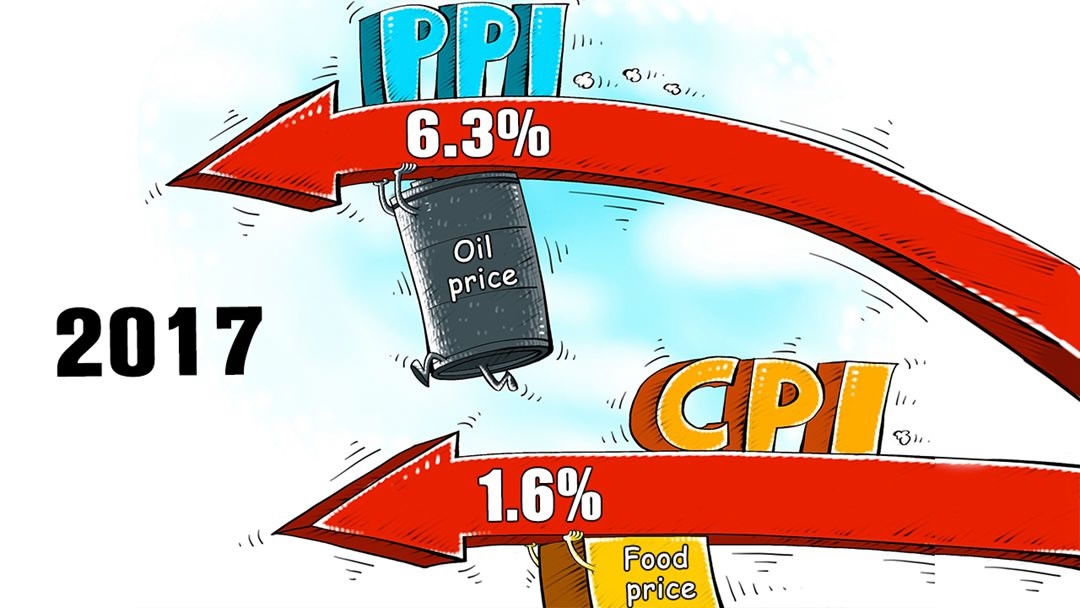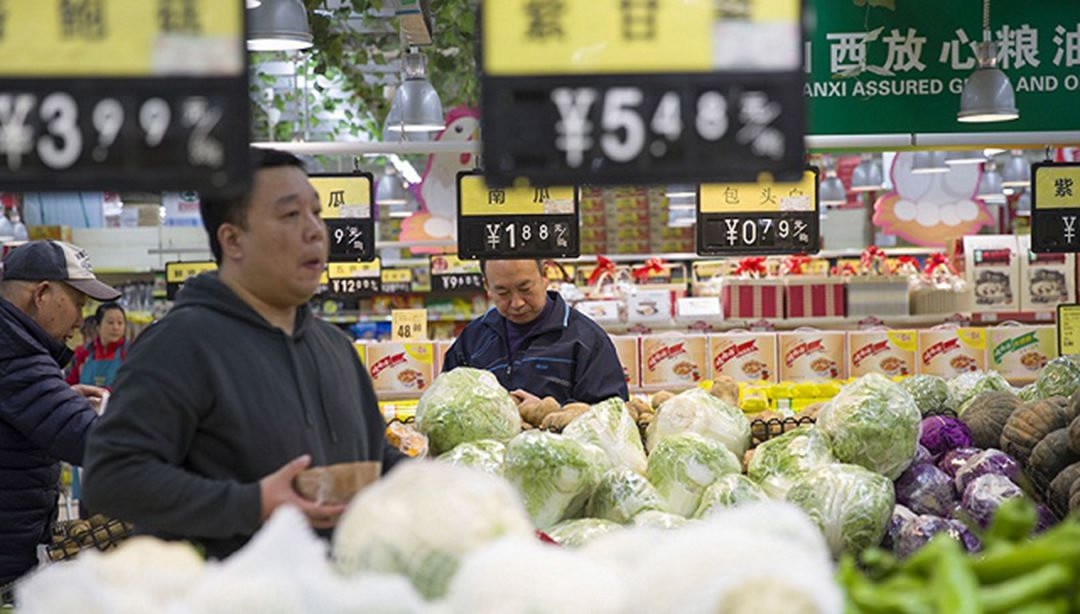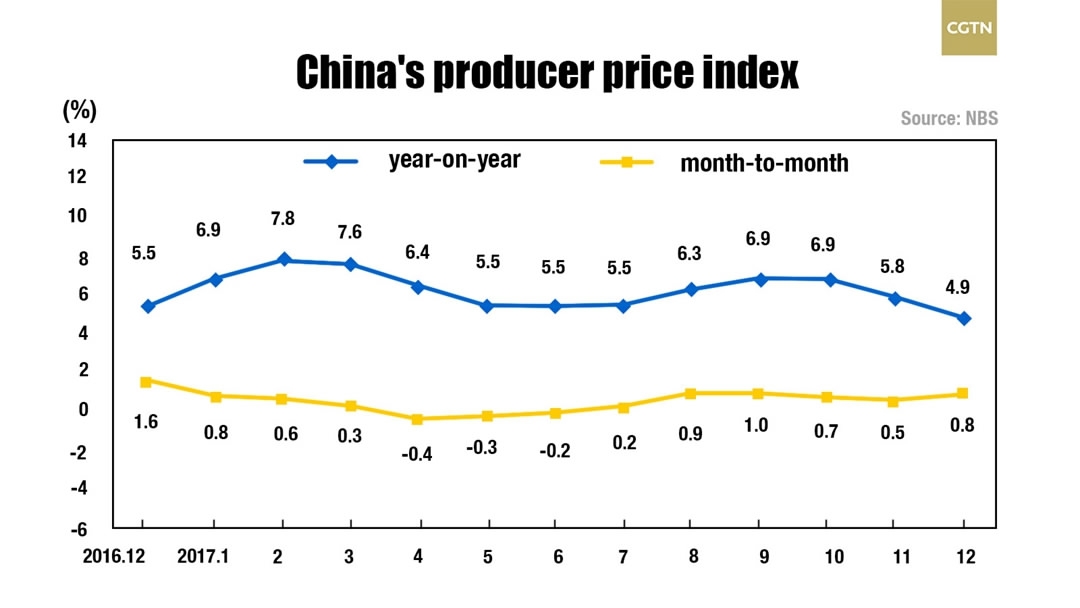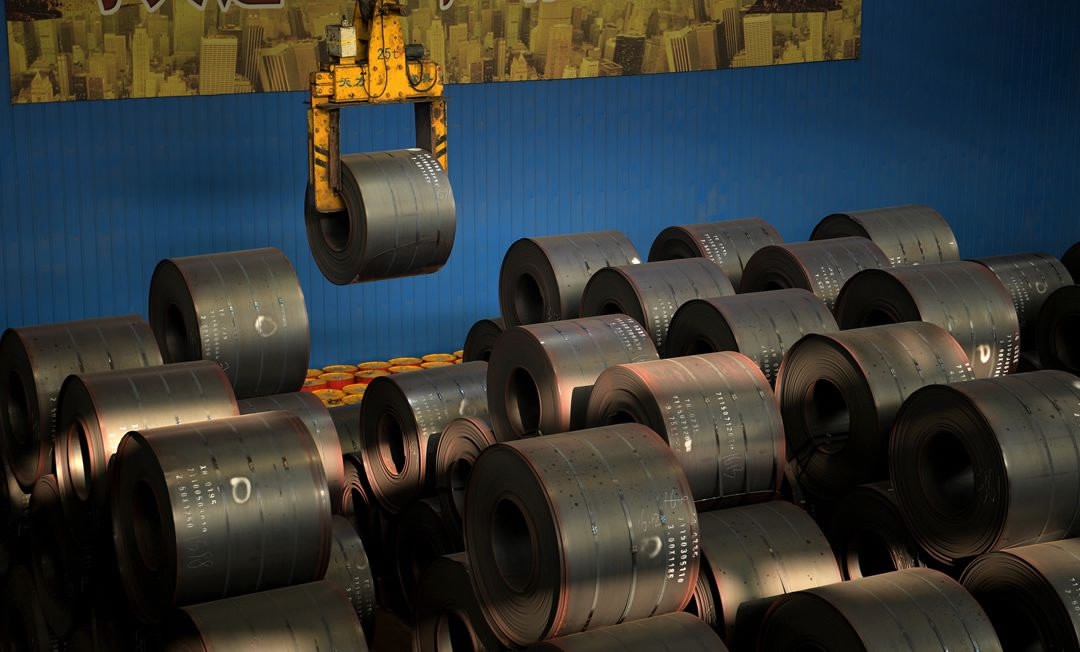
Business
13:02, 10-Jan-2018
China’s CPI up 1.6%, PPI ends a five-year decline in 2017
CGTN

China’s consumer price index (CPI) rose 1.6 percent year-on-year in 2017 due to the rise of food and oil prices, and the country’s producer price index (PPI) last year went up 6.3 percent year-on-year, ending a five-year decline, the National Bureau of Statistics (NBS) said Wednesday.

Food and oil prices influenced CPI
The CPI is a main gauge of inflation. China’s CPI in 2017 was down from two percent for 2016, according to the NBS.
The index was up 1.8 percent year-on-year in December, with an increase slightly up from 1.7 percent for November.

The rise of CPI in December was mainly thanks to the rise of food prices. Food prices last month rose 1.1 percent month-to-month, which caused CPI’s rise by about 0.22 percentage point month-to-month, according to Sheng Guoqing, a senior statistician of the NBS.
The prices of fresh fruits, eggs, pork, aquatic products and fresh vegetables are the main factors on CPI, the rise of which caused CPI’s rise by about 0.19 percentage point, according to Sheng.

VCG Photo
VCG Photo
The rise of oil prices is another contributor to the increase of CPI. In December, the prices of domestic gasoline, diesel and liquefied petroleum gas (LPG) rose 1.9 percent, 2.1 percent and 1.6 percent respectively, which contributed to an increase of CPI by about 0.05 percentage points.
Analysts believed the inflation in 2018 will rebound to over two percent, because of the continued rise of food and oil prices. However, given the tightening of monetary policy, the growth of inflation will be limited and will not become a problem in economic development.
PPI ended a decline since 2012
The PPI measures costs for goods at the factory gate. The country’s PPI last year ended a decline since 2012, according to the NBS.
The index last month increased 4.9 percent year-on-year, down from a growth of 5.8 percent recorded in November.

The five sectors-- oil and natural gas mining, ferrous metal smelting and rolling processing, oil processing industry, non-ferrous metal smelting and rolling processing, coal mining—contributed to the drop of PPI by about 0.6 percentage point, which are the main factors on the index.
In 2017, the sectors such as oil and gas mining, coal mining and processing, ferrous metal smelting and rolling processing saw a large increase of PPI, up 29 percent, 28.2 percent and 27.9 percent respectively.

VCG Photo
VCG Photo
With the weakening of domestic demand for investment, PPI is unlikely to see a sharp rise again, and the upstream industries with a substantial increase of the index will probably face a price correction, according to a report released by the Financial Research Center of the Bank of Communications.

SITEMAP
Copyright © 2018 CGTN. Beijing ICP prepared NO.16065310-3
Copyright © 2018 CGTN. Beijing ICP prepared NO.16065310-3